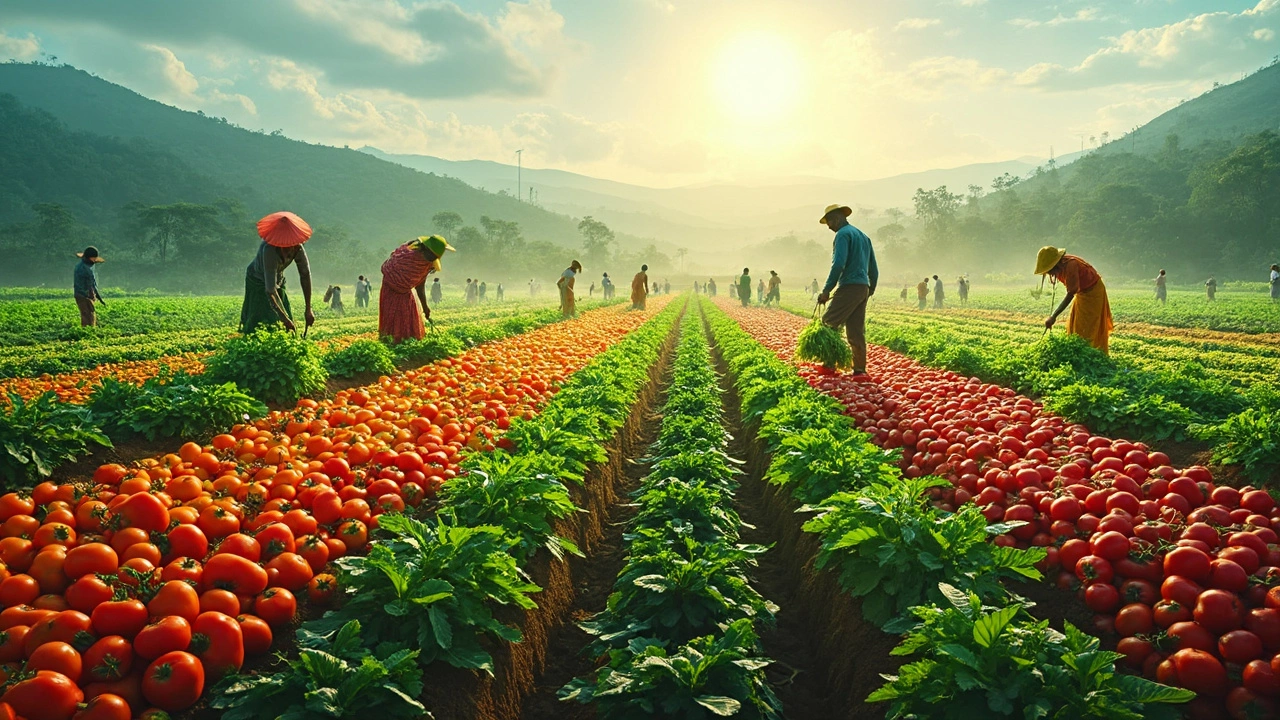Indian crops: What Grows Across the Subcontinent
When talking about Indian crops, the diverse range of food and fibre plants cultivated across India’s varied climates. Also known as crops of India, they drive the country’s diet, economy, and export market. Indian crops encompass major staples like rice, a water‑intensive grain that thrives in monsoon‑flooded paddies, essential cereals such as wheat, grown in cooler, drier zones and crucial for bread and chapati, fibre powerhouses like cotton, the backbone of India’s textile industry, and versatile feed crops such as maize, used for animal feed, food processing, and bio‑fuel. Together they illustrate how agriculture adapts to regional rainfall, soil types, and market demand. The relationship is clear: Indian crops require specific climate conditions, and those conditions shape the nation’s food security and industrial output.
Key Indian Crops Overview
Rice occupies more than 100 million hectares, mostly in the humid east and south. Its yield hinges on monsoon timing, water‑management practices, and high‑yield varieties. Wheat, cultivated on roughly 30 million hectares in the north‑west, depends on a cool growing season and precise fertilizer use to hit optimal protein levels. Cotton, spread across Gujarat, Maharashtra, and Telangana, links directly to the textile supply chain—its fibre length, strength, and lint percentage determine fabric quality and export value. Maize, covering about 10 million hectares, serves as a flexible crop: it fills gaps in the food‑feed balance, supports livestock, and increasingly powers renewable energy projects. These four crops form a semantic cluster: Indian crops → include rice, wheat, cotton, maize; each crop requires climate, water, and market access; and each influences a major sector—food security, staple diets, textiles, or bio‑energy. Recent advances such as drought‑tolerant rice strains, precision agriculture for wheat, genetically improved cotton for higher lint, and hybrid maize for better water use efficiency are reshaping yields and farmer incomes across the country.
Beyond the headline crops, India’s agricultural mosaic includes pulses, oilseeds, and spices that complement the staple lineup, but the four pillars dominate the conversation. Government policies, climate variability, and farmer adoption of technology all play roles in the future of Indian agriculture. In the articles below you’ll find deep dives into the most challenging plants to grow, beginner‑friendly indoor options, the economics of steel and plastics, and even the story behind the most expensive plant in India—all framed against the backdrop of these core crops. Whether you’re a hobby gardener curious about rice paddies, a student studying cotton’s impact on textiles, or an industry professional tracking maize’s role in feed markets, the collection offers practical insights and real‑world examples that tie back to the heart of Indian crops.
Maximizing Profits with Vegetable Farming in India
Discover how to maximize profits through strategic vegetable farming in India. Understand which crops yield the highest returns, how market trends can affect profits, and tips for optimizing your agricultural efforts. Learn how to leverage organic farming techniques and effectively use resources to enhance your vegetable gardening business. This guide is a must-read for anyone looking to thrive in India's agriculture sector.
- manufacturing
- India
- food processing
- garden tips
- rice cultivation
- government schemes
- balcony garden
- urban gardening
- balcony gardening
- profitable business
- business ideas
- plastic manufacturing
- drip irrigation
- plant care
- steel manufacturing
- sustainable gardening
- startup ideas
- steel industry
- flower gardening
- textile manufacturers






